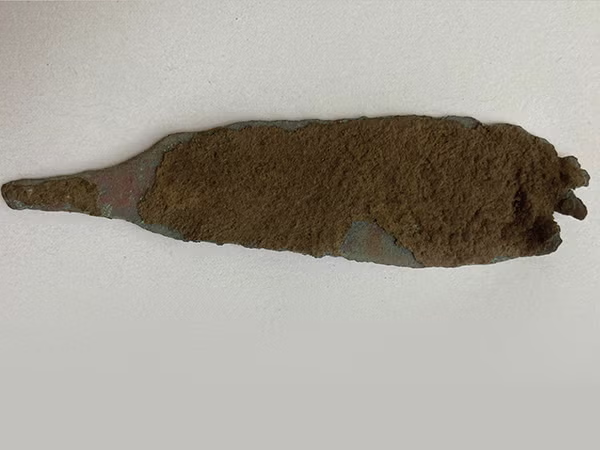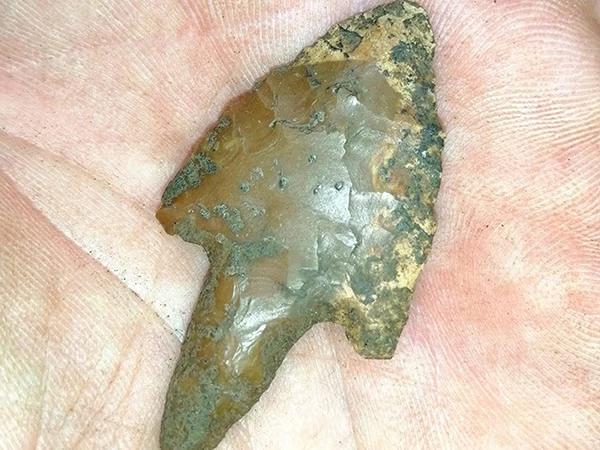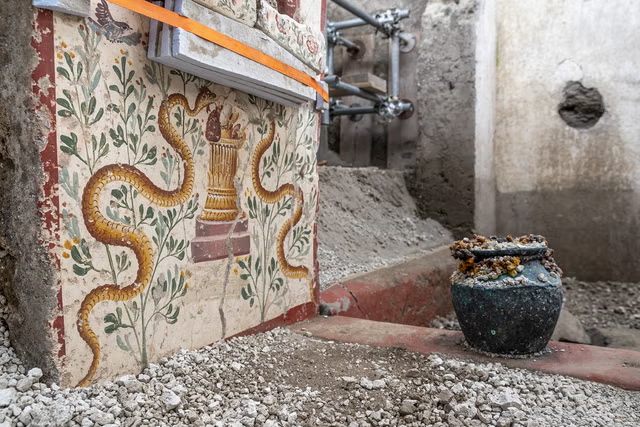Your support helps us to tell the story
Support NowThis election is still a dead heat, according to most polls. In a fight with such wafer-thin margins, we need reporters on the ground talking to the people Trump and Harris are courting. Your support allows us to keep sending journalists to the story.
The Independent is trusted by 27 million Americans from across the entire political spectrum every month. Unlike many other quality news outlets, we choose not to lock you out of our reporting and analysis with paywalls. But quality journalism must still be paid for.
Help us keep bring these critical stories to light. Your support makes all the difference.
A 4,000-year-old dagger unearthed at a “promising” Italian cave could reveal how social changes shaped Copper Age Europe, archaeologists say.
Excavations at the Tina Jama cave in northeastern Italy led to the discovery of the rare leaf-shaped copper dagger measuring under 10cm and having a prominent shank.
It was found along with abundant ceramic remains and stone artefacts dating from the second half of the third millennium BC.
These artefacts are key to understanding the technological, cultural and social transformations of Europe of that period, according to archaeologists from Italy and Slovenia studying them.
“The discovery of a rare copper dagger, dating back to the second half of the third millennium BC, is an exceptional event that raises questions about the use of the cave, given that such precious artefacts are generally found in sepulchral contexts,” they explain.

The excavations at Tina Jama mark a resumption of archaeological work after decades of inactivity. The aim is to “clarify different aspects of the recent prehistory of the northeastern Adriatic regions, adopting a modern and rigorous approach”, says excavation director Federico Bernardini.
The researchers also unearthed a structure in stone slabs and blocks likely used to close the entrance to the cave between 2000BC and 1500BC.
The purpose of the structure remains a mystery. The researchers suspect it was connected to funerary rites based on fragments of human skulls partly associated with it. It may also have been meant to protect the interior of the cave from winds.
The presence of ceramic materials and a hearth in the cave suggest it was frequented during this time by groups maintaining “close contacts” with the Dalmatian area near modern-day Croatia.
The copper dagger in particular was unearthed at a soil layer dating to the second half of the third millennium BC.

Similar finds have not been made before in Italy but there have been comparable discoveries in Slovenia, archaeologists say.
Flint arrowheads and long blades of the same material, polished stone axes and several stone and ceramic artefacts and shell ornaments were unearthed at the cave as well.
There was also an obsidian artefact, made of volcanic glass likely imported from southern Italy or central Europe.
The presence of diverse materials from different periods suggests the cave was frequented for millennia, the researchers say, making it “promising” for future excavation campaigns.
Disclaimer: The copyright of this article belongs to the original author. Reposting this article is solely for the purpose of information dissemination and does not constitute any investment advice. If there is any infringement, please contact us immediately. We will make corrections or deletions as necessary. Thank you.



